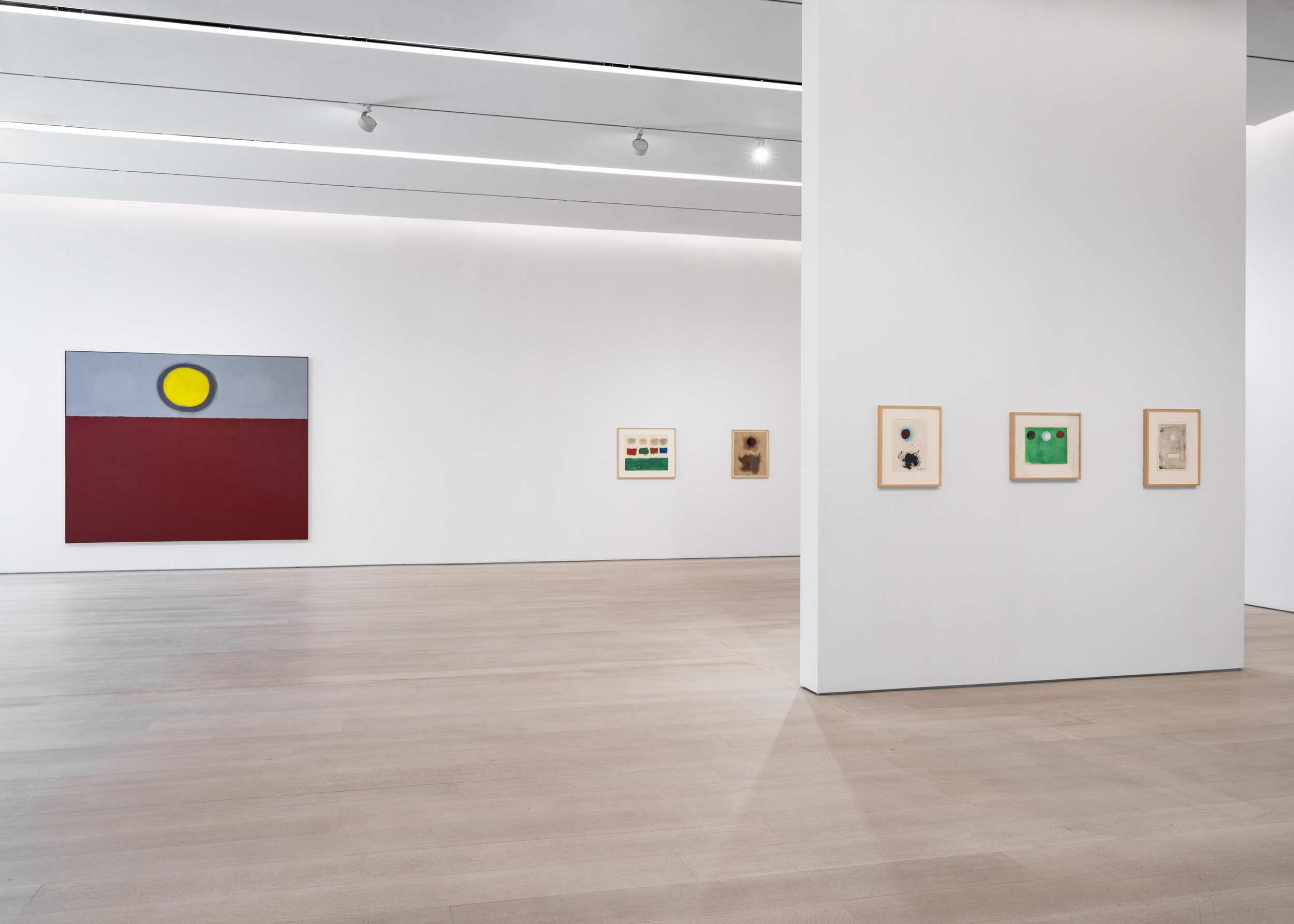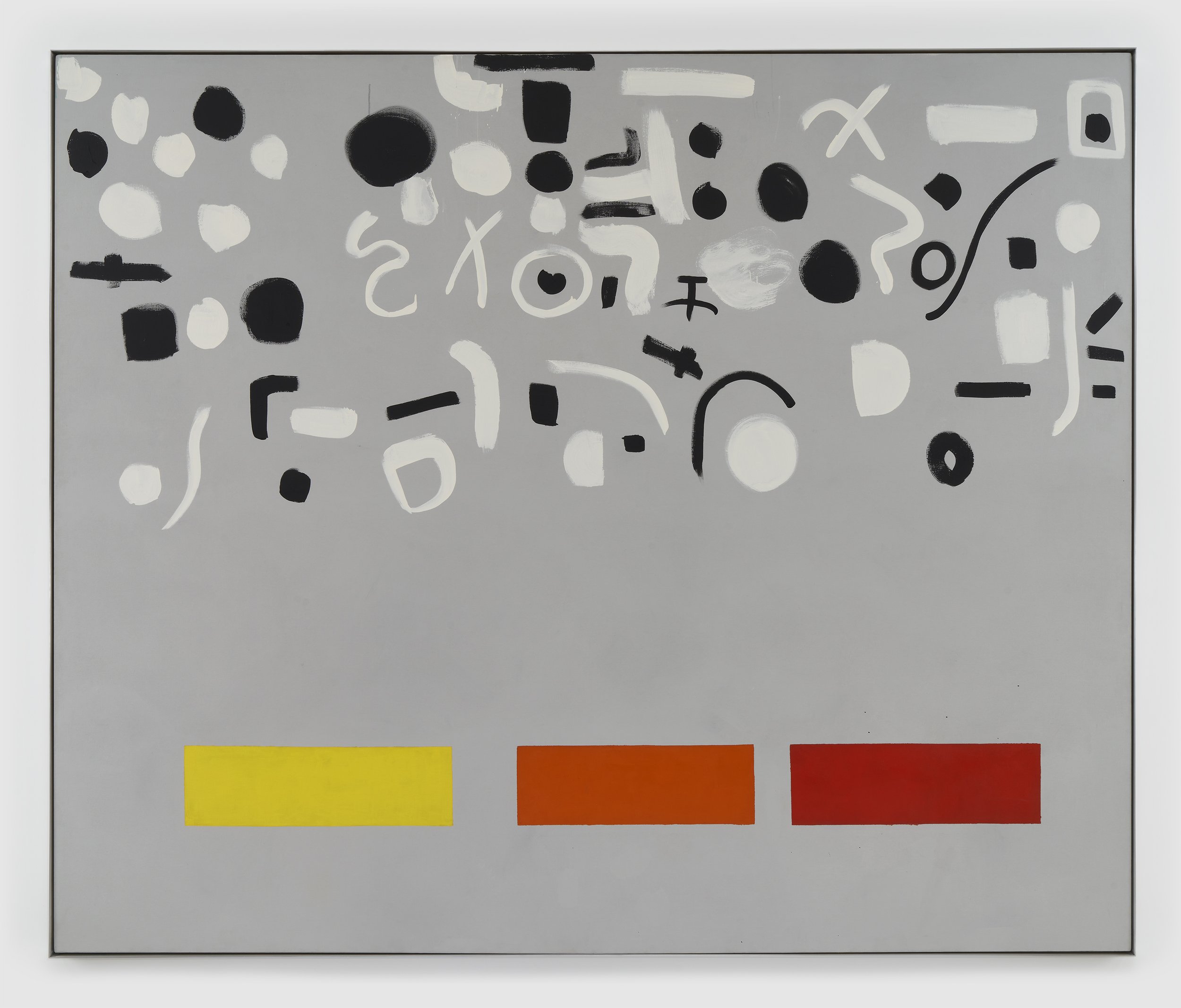Adolph Gottlieb: Vital Images
Adolph Gottlieb: Vital Images 540 West 25th Street, New York, NY 10001 November 15 – December 21, 2024 Photography courtesy Pace Gallery
New York – Pace is pleased to present Vital Images, an exhibition of late paintings, works on paper, and sculpture by Adolph Gottlieb, at its 540 West 25th Street gallery in New York. Opened November 14 and will be on view until December 21, this show will spotlight paintings created by the artist in the final years of his life. Holistically, the exhibition will reveal the intense ambition and formal refinement that motivated Gottlieb’s practice in the late 1960s and early 1970s.
Adolph Gottlieb: Vital Images 540 West 25th Street, New York, NY 10001 November 15 – December 21, 2024 Photography courtesy Pace Gallery
Beginning his career as an artist in New York in the 1920s, Gottlieb would become one of the founding members of The Ten, a group of artists devoted to expressionist and abstract painting, in 1935. Eight years later, he helped establish another group of abstract painters, The New York Artist Painters, which included Mark Rothko, John Graham, and George L. K. Morris. In 1943, Gottlieb co-authored and published a letter with Rothko in The New York Times, expressing what is now considered the first formal statement of the concerns of Abstract Expressionism.
Adolph Gottlieb, Russet, 1973 Acrylic on canvas, 60" x 48" (152.4 cm x 121.9 cm). © 2024 Adolph and Esther Gottlieb Foundation / Licensed by VAGA at Artists Rights Society (ARS), NY
Pace’s exhibition of Gottlieb’s work in New York takes its title from a 1972 interview with the artist, published in The New York Times on the occasion of his last gallery show, which was mounted at Marlborough Gallery. “They are vital images to me,” Gottlieb said of his work. “I continue to project them as I feel them.”
Adolph Gottlieb, Open Above, 1972 Acrylic on canvas, 7' 6-1/8" x 9' 1/8" (228.9 cm x 274.6 cm). © 2024 Adolph and Esther Gottlieb Foundation / Licensed by VAGA at Artists Rights Society (ARS), NY
The presentation will focus on how Gottlieb’s lifelong explorations of abstraction and its capabilities evolved during the later years of his life and career. Following a 1968 exhibition that filled both the Guggenheim and Whitney museums, he began to explore sculpture for the first time. A stroke he suffered in 1971 left him with only the use of his right arm and put him face-to-face with an existential challenge that he embraced as a means to move forward. Aware that his time was limited, Gottlieb set out to expand and refine the ideas about abstraction that he’d been developing for over 50 years. Equipped with his vision and imagination, he saw art as a life-giving force, a source of renewal as he sharpened his focus and advanced the practice that defined his life.
Adolph Gottlieb, Triptych, 1971 Acrylic on canvas, 90" × 19' (228.6 cm × 579.1 cm), on 3 panels. © 2024 Adolph and Esther Gottlieb Foundation / Licensed by VAGA at Artists Rights Society (ARS), NY
Remarkably, Gottlieb produced his largest-ever canvas, Triptych, a rarely exhibited three-panel composition, in 1971. This monumental composition—which measures 7.5 feet tall and 19 feet long—will figure in Vital Images at Pace, presented in conversation with paintings and works on paper dating between 1970 and 1973. The exhibition will also include Oval Slanted, a rare polychrome steel sculpture from 1968, in which the artist took up new experimentations with his visual vocabulary in three dimensional terms. Together, these late works reflect Gottlieb’s life-long practice of creating images and exploring and re-thinking them over time, assessing his process and progress time and again.





















Adolph Gottlieb: Vital Images 540 West 25th Street, New York, NY 10001 November 15 – December 21, 2024 Photography courtesy Pace Gallery
“What's going into it is what I'm looking for when I'm doing the painting—those things which I don't know,” Gottlieb said in a 1965 interview. “In other words, I'm feeling my way and then I find something—and there to my surprise is something that wasn't in the world before, and this can become more and more refined and subtle.”
Adolph Gottlieb (b. 1903, New York; d. 1974, New York) was a leading figure of the New York School. An advocate of abstraction, he produced paintings, drawings, prints, sculpture, and tapestries with an aesthetic vocabulary underpinned by automatism, primitivism, and Surrealism. He first received widespread recognition for his Pictographs series, which combine biomorphic abstraction with totemic imagery in compartmentalized compositions. In 1950, Gottlieb organized the protest of an exhibition at The Metropolitan Museum of Art, New York, for which he and a group of fellow artists became known as the Irascibles. Further refining his approach, Gottlieb developed his Labyrinths, Imaginary Landscapes, and Bursts series, works that he created with painted gestures and abstract forms that prompt an immediate, visceral impact on the viewer.
Pace is a leading international art gallery representing some of the most influential contemporary artists and estates from the past century, holding decades-long relationships with Alexander Calder, Jean Dubuffet, Barbara Hepworth, Agnes Martin, Louise Nevelson, and Mark Rothko. Pace enjoys a unique U.S. heritage spanning East and West coasts through its early support of artists central to the Abstract Expressionist and Light and Space movements.
Since its founding by Arne Glimcher in 1960, Pace has developed a distinguished legacy as an artist-first gallery that mounts seminal historical and contemporary exhibitions. Under the current leadership of CEO Marc Glimcher, Pace continues to support its artists and share their visionary work with audiences worldwide by remaining at the forefront of innovation. Now in its seventh decade, the gallery advances its mission through a robust global program— comprising exhibitions, artist projects, public installations, institutional collaborations, performances, and interdisciplinary projects. Pace has a legacy in art bookmaking and has published over five hundred titles in close collaboration with artists, with a focus on original scholarship and on introducing new voices to the art historical canon.
Today, Pace has seven locations worldwide, including European footholds in London and Geneva as well as Berlin, where the gallery established an office in 2023. Pace maintains two galleries in New York—its headquarters at 540 West 25th Street, which welcomed almost 120,000 visitors and programmed 20 shows in its first six months, and an adjacent 8,000 sq. ft. exhibition space at 510 West 25th Street. Pace’s long and pioneering history in California includes a gallery in Palo Alto, which was open from 2016 to 2022. Pace’s engagement with Silicon Valley’s technology industry has had a lasting impact on the gallery at a global level, accelerating its initiatives connecting art and technology as well as its work with experiential artists. Pace consolidated its West Coast activity through its flagship in Los Angeles, which opened in 2022. Pace was one of the first international galleries to establish outposts in Asia, where it operates permanent gallery spaces in Hong Kong and Seoul, along with an office and viewing room in Beijing. In spring 2024, Pace will open its first gallery space in Japan in Tokyo’s new Azabudai Hills development.
This exhibition opened on November 15th and will be on view until December 21, 2024, at Pace Gallery 510 West 25th Street in New York. For more information about this exhibition and others, please visit the Pace Gallery’s website here. Pace Gallery can be found on Instagram and Artsy, too.














